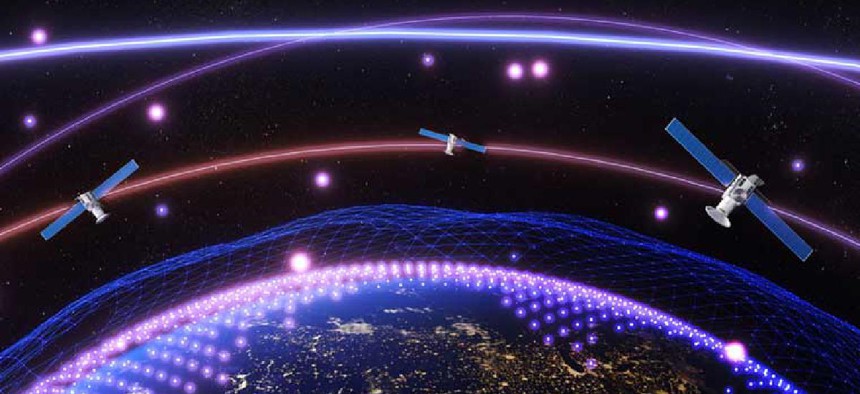Scientists test GPS-free navigation

To calculate position without GPS, a team of researchers are using cosmic-ray muons -- subatomic particles can not only pass through the air, but also through rock, buildings and underground.
GPS navigation faces particular challenges in polar regions. Not only are there disturbances in the ionosphere that disrupt signals, but geostationary orbiting satellites have limited coverage at high latitudes and relatively few polar-orbiting positioning satellites pass over the poles. But with climate change opening the Arctic waterways, the military has been looking for navigation solutions that don’t rely on GPS.
A team of researchers has developed a proof of concept that uses cosmic-ray muons as an alternative method for sending GPS signals. The subatomic particles can not only pass through the air, but also through rock, buildings and underground – areas where GPS communications are now impossible.
The project was selected by the Office of Naval Research Global and the Army Development Command as the winner of the second annual Global-X Challenge, which called for international projects to address capability gaps faced by the military and the private sector at high latitudes.
“Like echolocation, the timing difference between ‘pings’ -- the signals from a crossing muon in our detectors – can allow the user to measure the distance from one detector to another with multiple detectors allowing location by triangulation,” team leader Chris Steer from Geoptic Infrastructure Investigations Ltd explained in an ONR release. “The technique has already been tested in the laboratory before, where the process of converting particles' crossing times to infer the position of a detector was successfully demonstrated.”
After initially testing the system in a large water-immersion tank in the U.K., the project will move to a high-latitude arctic lake in Finland that is covered by one meter of ice.
One of the main challenges is developing of a large number of tightly specified sensors that can calculate position with minimal uncertainty and integrating them with the muon detectors. Making matters even more challenging, Steer said, is deploying the system “in Arctic weather conditions (typically -20 degrees Celsius), in an isolated environment and partially underwater. The cold environment has implications across many aspects of the project from personnel to ensuring the electronics are robust to the cold.”
Because the sea is essentially transparent to cosmic-ray muons, the technology may be especially useful in GPS-denied underwater environments for scientific subsea navigation, Steer said. “Similarly, as cosmic ray muons are highly penetrating and able to pass through many tens to hundreds of meters of rock, it is possible to see that this technology also has strong opportunities in tunnels and other underground settings,” he said.
The future is so promising for this technology that the possible applications in science, engineering and industry “can also be a distracting issue,” Steer said. “The next stage after this project would be to understand the positioning needs of end users, down selecting to the best fit with our positioning measurement system and maturing the technology for their needs.”
NEXT STORY: NIST calls for insights on emerging technologies





